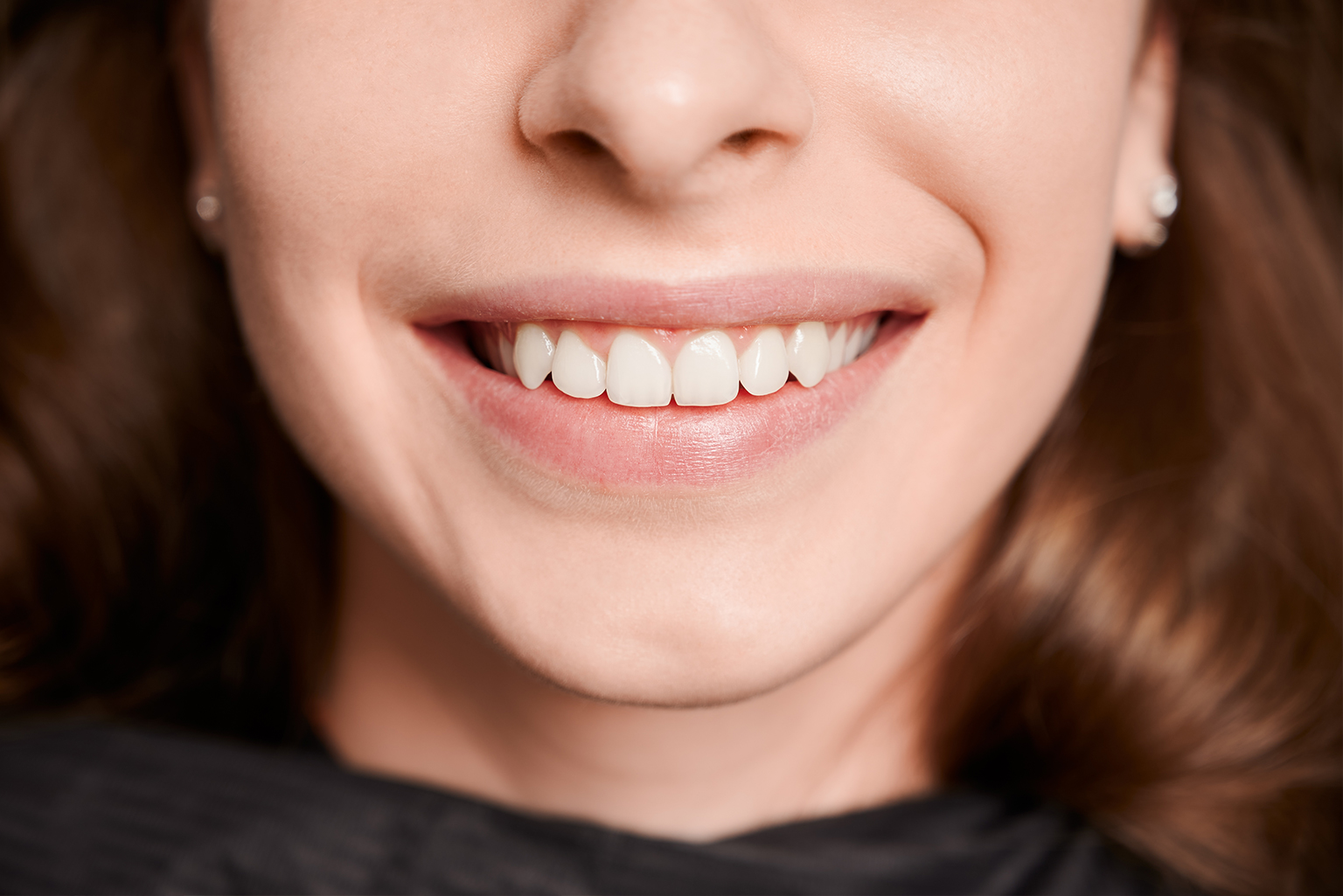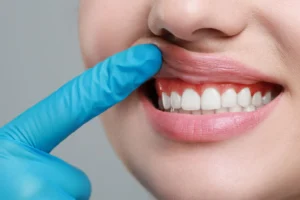A bright, sparkling smile can light up a room and boost your confidence like nothing else. However, for those with sensitive teeth, achieving that dazzling smile can feel unattainable, as traditional teeth whitening methods often exacerbate tooth sensitivity, leaving many people feeling stuck with dull, and discolored teeth. If you’ve always believed that teeth whitening for sensitive teeth was just not an option for you, then read on as we explore 6 options you can go with that will help you achieve a stunning smile without the discomfort of increased sensitivity.
Why Teeth Whitening Can Exacerbate Tooth Sensitivity
If you’ve ever wondered why your teeth are so sensitive after a teeth whitening session, whether that’s one done in the dentist’s office or via an at-home solution, it’s because the ingredients used in teeth whitening products are often overly abrasive or acidic. For example, bleaching agents are acidic, which can eat away at your teeth’s enamel if left on for too long, can irritate the gums if used improperly in trays, and can irritate the nerves in the teeth. For those with thin enamel to begin with, the sensitivity experienced after teeth whitening is heightened, as there is less enamel protecting the inner nerves of the teeth. Tooth sensitivity after teeth whitening is usually attributed to either bleaching or dentin sensitivity, and here is what these are.
1. Bleaching Sensitivity: as the name implies, bleaching sensitivity can occur when your teeth are exposed to peroxide-based whitening agents. It is believed that this type of sensitivity happens when the oxidative free radicals from the peroxide penetrate deep into your tooth’s structures to break down and remove the stains. For some, the peroxide can irritate the tooth and produce sensitivity in the form of pain, discomfort, or tingly sensations when consuming hot, cold and/or sweet foods after a whitening session.
2. Soft Dentin Sensitivity: which is also known as dentin hypersensitivity, occurs when the protective enamel layer of your teeth starts to wear down, and exposes the soft dentin beneath. When that layer of enamel is no longer there to protect the tooth, you can get sharp pain or discomfort from certain stimuli like hot or cold temperatures, sweet or acidic foods, and even pressure.
Ultimately, teeth whitening for sensitive teeth can be done if the right ingredients are used that won’t trigger any of the above sensitivities. When looking at teeth whitening products, try to avoid ones that contain peroxide like hydrogen peroxide and carbamide peroxide, as these are acidic and can irritate the nerves in the teeth. To forego discomfort, look for products that do not contain peroxide at all, or use formulas that contain desensitizing gels or serums prior to treatment.
6 Whitening Solutions Used In Teeth Whitening for Sensitive Teeth
Now that we’ve looked at the types of sensitivity experienced and why they occur, let’s take a look at solutions that work for people who want to get whitening treatment but have sensitive teeth.
1. Professional In-Office Bleaching With Desensitizing Agents. The fastest and most effective way to have teeth whitening done is in-office at the dentist via bleaching. But, for those with sensitive teeth, this is often a no-go as bleaching commonly produces increased sensitivity. However, what you can do is let us know that you have sensitive teeth, and we can use desensitizing agents, such as Sensodent KF and CPP-ACP, which have been shown to produce promised results in reducing both the incidence and intensity of tooth sensitivity after in-office teeth bleaching. In addition to reducing tooth sensitivity, the use of these desensitizing agents can reduce adverse effects brought on by bleaching, and improve overall patient comfort.
2. Hismile – LED Whitening Kit. The next best thing is to look for a whitening kit that doesn’t contain hydrogen peroxide at all, and Hismile’s LED Whitening Kit is a product that pops up time and time again for our patients. The main ingredient is PAP+, a unique formula made primarily of phthalimidoperoxycaproic (PAP) acid, which whitens the teeth by oxidizing stains and lightening the overall tooth color by entering through the enamel layer and breaking down the molecules that hold the color. The PAP+ is supported by hydroxyapatite, a remineralizing agent, and potassium citrate, which desensitizes the teeth during treatment. You only need to use it for 10-minutes a day, for 1-2 treatments, and the results are instantaneous.
3. Smile Brilliant – Custom Made Tray. If you are looking for a dental-grade whitening option that is done at-home, then Smile Brilliant is the system you want. It is a lab-direct service that employs dental lab technicians to hand-craft custom-fitted trays with the exact impressions of your teeth. The whitening kit comes with a set of custom teeth whitening trays, up to 27 applications of carbamide peroxide, and the gel is dental-grade and is packed in light-proof foil bags to keep the chemical composition from degrading. Treatment takes 45-minutes to 3-hours, and the formula contains desensitizing gels to reduce sensitivity.
3. Snow – LED Whitening Kit. If you are looking for a less expensive option, Snow’s LED Whitening Kit is often touted as the one to purchase, as it’s fast-acting, gentle on your enamel, and is designed for whitening sensitive teeth. The kit comes with a mouthpiece which uses Snow’s LED patented technology, a charging cable, three whitening wands (carbamide and hydrogen peroxide formulas), and a desensitizing serum. Snow claims that their LED Whitening Kit can whiten your teeth up to eight shades in 21 days, with no sensitivity or pain, with treatment time being between 9-30 minutes. The kit is also vegan, cruelty-free, and gluten-free. As a side note, if you don’t want to use a full whitening kit, Snow also has strips for sensitive teeth whitening, called Magic Strips that have a 15-minute treatment time, and dissolve without leaving a gooey mess.
3. Dr. Brite – LED Whitening Kit & Pens. Another brand that has whitening kits and pens available as options for whitening sensitive teeth is Dr. Brite. What makes Dr. Brite unique is that they have an all-natural whitening gel syringe option, sensitivity relief pens, several whitening pens for specific use cases like red wine, vaping, and coffee/tea, as well as, regular teeth whitening pens for sensitive teeth, and they have advanced whitening kits that use hydrogen and carbamide peroxide. So, if you’re looking for an all-natural solution that is vegan, cruelty-free, and free of harsh chemicals, or are okay using a whitening solution with peroxide, Dr. Brite likely has a product that fits what you’re looking for. It’s important to note that both of Dr. Brite’s advanced whitening options include hydroxyapatite, which remineralizes the enamel on your teeth. The new Dr. Brite Wireless Advanced Whitening System is hydrogen peroxide based, and comes with a day and night pen, as well as, an LED mouth tray to activate the whitening gel.
6. Crest 3D Sensitive – Whitening Strips. These are one of the more popular options among patients, but these particular strips should be used alongside Crest’s Sensitivity Toothpaste, as these teeth whitening strips do contain hydrogen peroxide. They are designed to gently remove stains from your teeth while protecting your gums and nerves, as the whitening ingredient on the strips is enamel-safe. The strips do use a harder adhesive, so pay mind to this when removing them. Treatment is 30-minutes per day, for 14 days.
No matter what level of sensitivity you experience, there are a variety of options for whitening sensitive teeth that can help you achieve the bright and white smile that you desire without having to worry about any additional pain or discomfort. Talk with us today, and our team of professionals can help you get started on your journey to a brighter smile.






